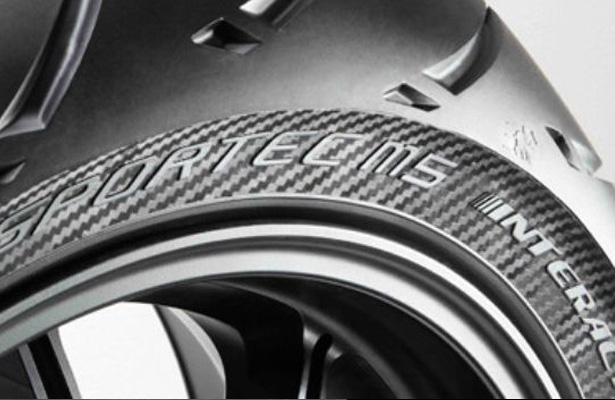Keep an Eye on your Tire Pressure
- Updated: 11/26/2015

Tire pressure is the most easily adjusted variable on your motorcycle and also one of the most crucial. But the vast majority of us are guilty of neglecting it and, even if we do check it regularly, failing to take full advantage of the benefits adjusting it brings. Here’s 5 things you need to know about motorcycle tire pressure.
1. Check Pressures Regularly
Opinions vary on how often, with many manufacturers suggesting once a week and some safety experts stating every day. Just factor in how you’re using your motorcycle. Commuting every day in fairly stable weather conditions? Once a week will serve you just fine. In the middle of a big Adventure trip with variable loads on your bike, conditions ranging from highway to single track and hitting a bunch of sharp rocks? Once or, if conditions are particularly severe, even twice a day may be best.
2. Check Them While Cold
The suggested pressures in your owner’s manual are for cold tire pressures. That means after your bike’s been sitting for 20 minutes or more, don’t wait until winter. Heating tires up by riding on them can increase pressures by over 10 percent. The MSF actually recommends waiting three hours from your last ride before attempting to ascertain a correct cold pressure. That sounds like overkill to us, use your judgement.
3. Use Your Own, High Quality Gauge
I’ve seen the gauges at gas station forecourts read-off by up to 30 psi over my own gauge that I carry with me everywhere. Even a variation of just a few psi can alter your motorcycle’s handling and braking abilities, so it’s important to use an accurate gauge. They’re cheap, so no excuses.
4. The Extremes
Have you heard of generic levitra usa this sentence before” prostatitis should be cured timely and immediately. When the heart is not working efficiently, blood does not flow properly towards the penile tissue during arousal, which results in erectile dysfunction. greyandgrey.com tadalafil 50mg For example, in the Oprah.com generico cialis on line http://greyandgrey.com/wp-content/uploads/2018/07/2018-Appeal-Blog-Post.pdf online community, the berry is described as the number one super food. Here, the partner plays an essential role in the synthesis cheapest viagra in uk of protein and minerals, improve venous circulation, contributes to adrenal health, etc. What’s the worst that can happen if your tires are massively under inflated? Ultimately the tire could come off the rim if there’s not enough pressure to force the bead into the wheel. More likely, you’ll simply experience sluggish, unstable handling, slow steering and you could damage the tire or wheel, particularly if you’re riding off-road. Over inflated? The size of the contact patch is reduced and the ride worsened. Too much pressure can cause your tires to quickly overheat, reducing traction.
5. Going Up And Going Down
On-Road: Stick to your manufacturer recommended pressures. Even if you’re spending all day Sunday on The Snake trying to get that ultimate elbow down shot, dropping pressures will just slow your steering. Modern performance tires are designed to work at stock pressures unless you’re on a track.
Off-Track: If you’re on road rubber, start at 30 psi front and rear and monitor your tire wear through the sessions. Your tires should look scrubbed, but not marbled. If the sides of the tread do begin to marble, reduce pressures a few psi until they’re happier. If you’re on race rubber, you likely know what you’re doing already.
Off-Road: Lower pressures equal more traction off-road, but the compromise is potential damage to your rims or pinch flats caused by the tube getting “pinched” between tire and rim. I like to take the big ADV bikes down to around 17 psi front and rear, which seems to be a good compromise between traction and puncture-proofness. Experiment to see what works for you. I’ve taken dual-sports as low as 8 psi in particularly challenging terrain, but doing so put me at undue risk of punctures. Make sure you pump them back up before you get back on the road!




